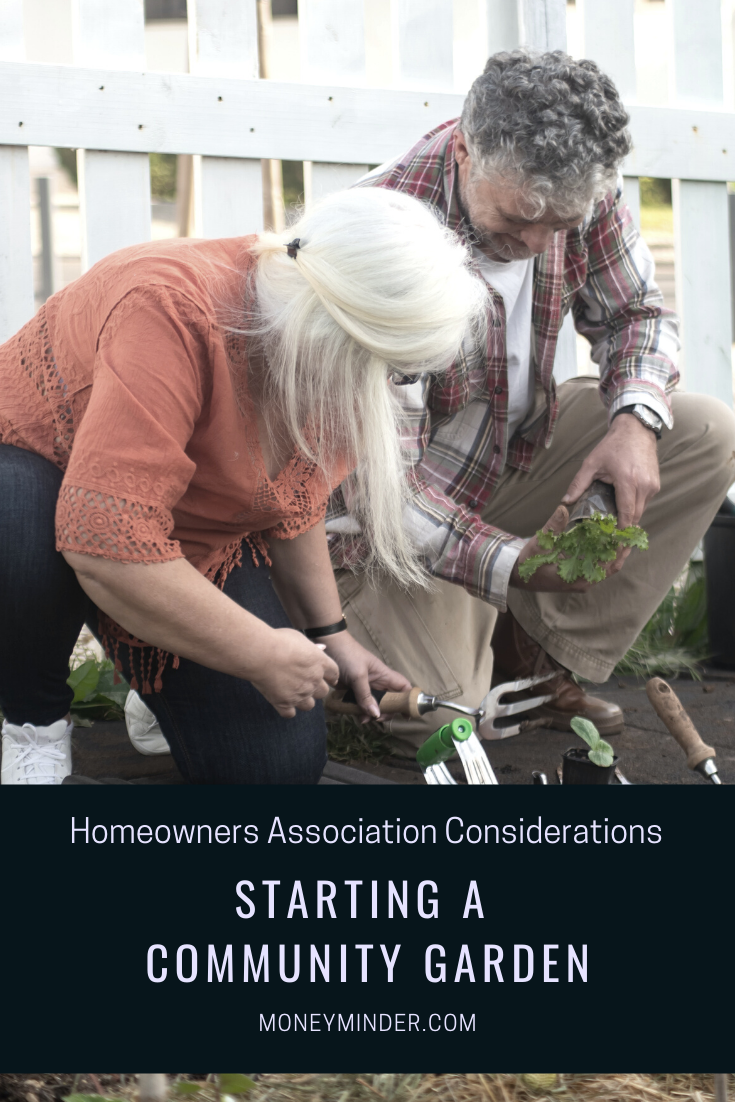When it comes to growing your own food, there are a great many benefits. Not only do fresh air and digging in the dirt provide some good old-fashioned outdoor therapy, having fresh fruits and vegetables on hand promotes health and wellness.
But gardening as a community takes these benefits to the next level. It allows your Homeowners Association to put a plot of land or open space to good use. Gardening together is a wonderful way for homeowners to work toward something good. It can foster relationships and friendships that may not have otherwise happened. Neighbors working together in a community garden can put everyone in a better headspace when
disagreements do arise.
An Approved HOA Community Garden That Runs Smoothly
A community garden typically gets started when one or more homeowners are motivated to get the ball rolling. One or two people is a good starting point. But, depending on the size of your community, it’s even better to have a group of 5-7 to form a committee. This group can be tasked with everything it takes to get the community garden approved by the HOA:
 1. Propose a location
1. Propose a location
Many communities have open spaces or plots of land that are unused. Consider other factors such as sunlight and water access when choosing the best location for your garden.
2. Create a Budget
You’ll want to have accurate estimations of what the garden will cost to set up initially, as well as on an ongoing basis. Costs to consider include:
- Fencing
- Irrigation system installation
- Wood or pre-built raised beds
- Compost bins
- Soil
- Water costs
- Seeds
- Mulch
- Location-appropriate plant protection from things like cold, deer or insects
- Education in the form of books or guest speakers to learn about best practices.
3. Decide on a Work/Ownership Structure
Will your community garden truly be a joint effort by all? Or is it best for interested families to each have a plot or row to do as they please? Have your committee discuss what would be best for your community.
4. Set Some Rules
Nobody likes too many rules but they truly can prevent unwanted issues in the future. In addition to setting a schedule for who is doing what, and when, consider a few rules that address:
- the expectation around weeds and frequency of weeding
- what should happen if plants are dying
- the process around seasonal cleanup
- watering schedule
- the who, how and when of harvest
- the use of chemicals, pesticides and fertilizer
Get Down & Dirty!
Once your community garden is HOA-approved, it’s time for the fun to begin. Keep in mind that it can take some time to figure out what grows well in your garden and for it to run like a well-oiled machine. But if you stick to it, you’ll be seeing the fruits of your labor in no time.
 1. Propose a location
1. Propose a location
 Connect your Venmo account to MoneyMinder PRO to directly download transactions, saving you time and effort. You just review the transactions to ensure they are properly categorized and fill out any required fields.
Connect your Venmo account to MoneyMinder PRO to directly download transactions, saving you time and effort. You just review the transactions to ensure they are properly categorized and fill out any required fields. Connect your Bank, Square and PayPal accounts to MoneyMinder PRO to directly download transactions, saving you time and effort. You just review the transactions to ensure they are properly categorized and fill out any required fields.
Connect your Bank, Square and PayPal accounts to MoneyMinder PRO to directly download transactions, saving you time and effort. You just review the transactions to ensure they are properly categorized and fill out any required fields. Connect your Bank, Paypal and Square accounts to MoneyMinder PRO to directly download transactions, saving you time and effort. You just review the transactions to ensure they are properly categorized and fill out any required fields.
Connect your Bank, Paypal and Square accounts to MoneyMinder PRO to directly download transactions, saving you time and effort. You just review the transactions to ensure they are properly categorized and fill out any required fields. Connect your Bank, Paypal and Square accounts to MoneyMinder PRO to directly download transactions, saving you time and effort. You just review the transactions to ensure they are properly categorized and fill out any required fields.
Connect your Bank, Paypal and Square accounts to MoneyMinder PRO to directly download transactions, saving you time and effort. You just review the transactions to ensure they are properly categorized and fill out any required fields. Join It is a membership management service that helps businesses and nonprofits effectively sell, track, and grow their membership.
Join It is a membership management service that helps businesses and nonprofits effectively sell, track, and grow their membership.